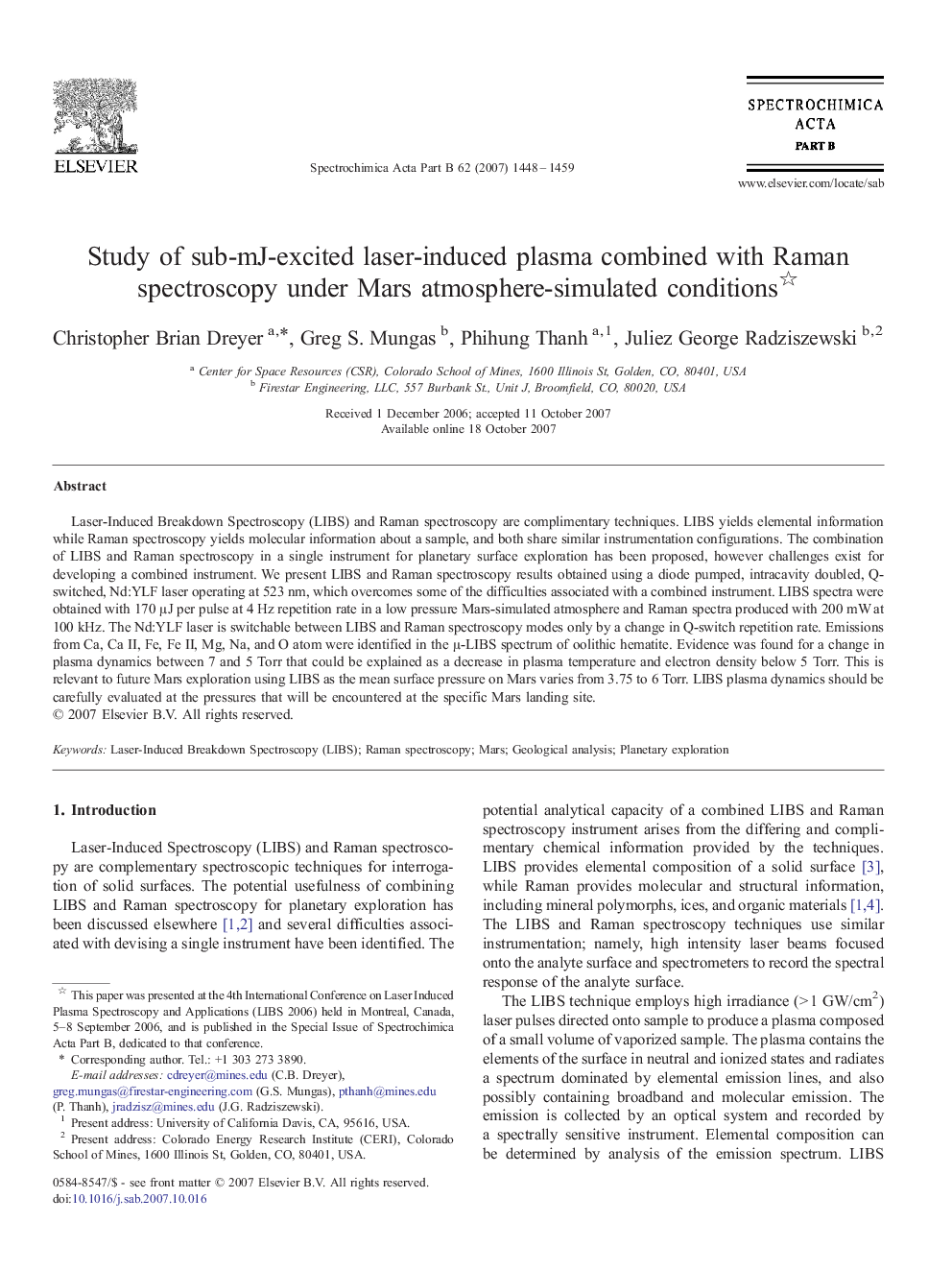| Article ID | Journal | Published Year | Pages | File Type |
|---|---|---|---|---|
| 1241335 | Spectrochimica Acta Part B: Atomic Spectroscopy | 2007 | 12 Pages |
Laser-Induced Breakdown Spectroscopy (LIBS) and Raman spectroscopy are complimentary techniques. LIBS yields elemental information while Raman spectroscopy yields molecular information about a sample, and both share similar instrumentation configurations. The combination of LIBS and Raman spectroscopy in a single instrument for planetary surface exploration has been proposed, however challenges exist for developing a combined instrument. We present LIBS and Raman spectroscopy results obtained using a diode pumped, intracavity doubled, Q-switched, Nd:YLF laser operating at 523 nm, which overcomes some of the difficulties associated with a combined instrument. LIBS spectra were obtained with 170 μJ per pulse at 4 Hz repetition rate in a low pressure Mars-simulated atmosphere and Raman spectra produced with 200 mW at 100 kHz. The Nd:YLF laser is switchable between LIBS and Raman spectroscopy modes only by a change in Q-switch repetition rate. Emissions from Ca, Ca II, Fe, Fe II, Mg, Na, and O atom were identified in the μ-LIBS spectrum of oolithic hematite. Evidence was found for a change in plasma dynamics between 7 and 5 Torr that could be explained as a decrease in plasma temperature and electron density below 5 Torr. This is relevant to future Mars exploration using LIBS as the mean surface pressure on Mars varies from 3.75 to 6 Torr. LIBS plasma dynamics should be carefully evaluated at the pressures that will be encountered at the specific Mars landing site.
